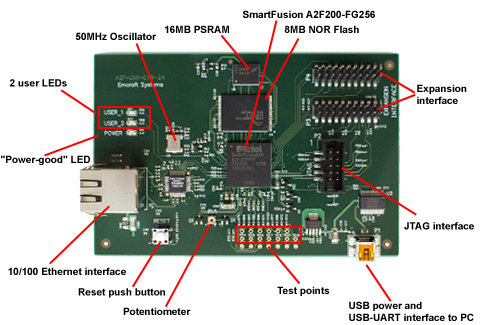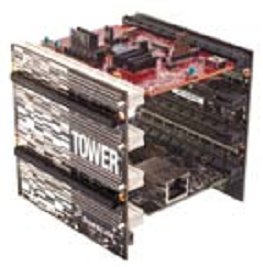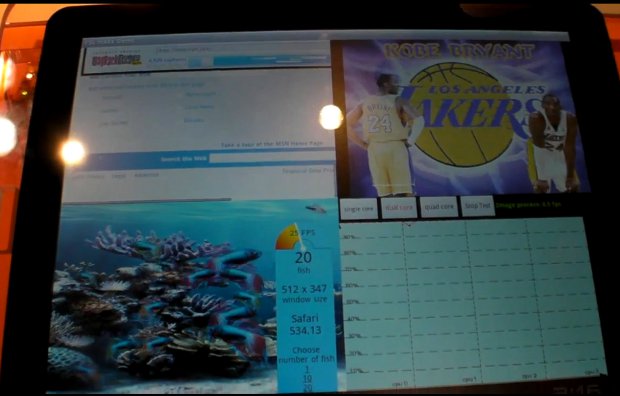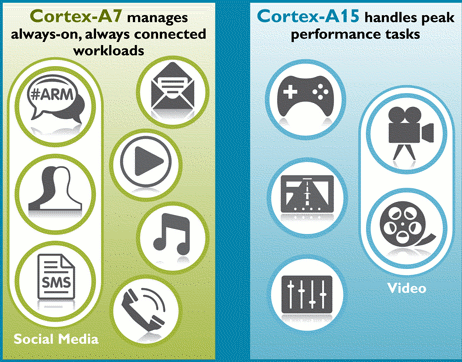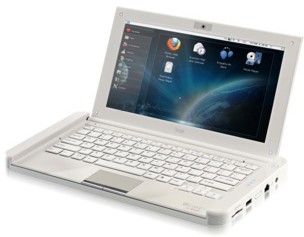There are plenty of low cost Linux development boards based on Cortex A8 or A9 such as the Beaglebone, as well as some devkits based on ARM7 and ARM9 such as SAM9 development kits , but if your application is cost and/or energy sensitive you can also switch to micro-controllers using Cortex M3 or M4 based development boards such as Emcraft SmartFusion devkits. You can run a functional uCLinux system with 1MB of RAM and 1MB of flash including the TCP/IP stack. You need to use uClinux and not directly Linux, because the Cortex M3 doess not have a Memory Management Unit (MMU) and only a Memory Protection Unit (MPU). This can bring some interesting software development challenges such as (apparently random) kernel panics, the lack of fork, memory fragmentation and more. You can check out http://kernel.org/pub/linux/libs/uclibc/Glibc_vs_uClibc_Differences.txt for the main differences between uClibc and Glibc. The instructions to patch and […]
Brew Your Own Beer with Freescale Kinetis Cortex M4 MCU
This brewing system is part of top three designs for Freescale Make It Challenge: Kinetis MCUs. The two other designs are an Automobile Collision Detector and a “Swiss Army Knife” for the Blind . This design utilizes Freescale’s Kinetis K60 Tower System with MK64M512 Cortex M4 MCU and FreeRTOS operating system. This could become a beer brewing appliance with the target market being home brewers and small brewpubs and restaurants. Matthew Pratt (the one who design this system) says current hone brewing systems sell for about 10,000 USD. The sweet wort production process can be labor-intensive, requiring precise control of temperatures and transition times (It takes 4 to 5 hours for 5 gallons of beer). The Kinetis Beer Brewing System automates the process from the initial filling of water to the beer being ready to be cooled and yeast added. The user only needs to add the ingredients, malt and […]
Freescale i.MX6 Quad-Core Benchmark Demo
Freescale is showcasing the performance of their Quad Core ARM Cortex-A9 i.MX6 Quad processor at ARM Techcon 2011. The Freescale i.MX6 reference design runs a demo in Android 3.x (Honeycomb) with four windows: JPEG Decoding Window Web browser rendering and scrolling HTML5 Fish tank CPU Usage real-time chart The 3 windows used for the benchmark are all using software processing (no GPU involved) to show to performance improvement by moving from 1 to 2 and finally 4 cores. The benchmark results are quite impressive as with one core JPEG decoding is about 0.6 frame per second and with 4 cores it can decode 4.2 frames per seconds while other windows also show performance improvement. Freescale says there was little modifications done to make the software work on four core and you don’t even need to have multi-threaded applications to take advantage of 4 cores as the OS will usually take […]
Yocto Project Release 1.1 Announced
The Linux foundation announced Yocto Project Release 1.1 today. This release codenamed “Edison” and based on Poky 6.0 is the the second release of the project, one year after it was announced in October 2010 to provide developers with greater consistency in the software and tools they’re using across multiple architectures for embedded Linux development. The Yocto Project reached the following milestones during the last year: Alignment of OpenEmbedded technology and the inclusion of OpenEmbedded representation in the Yocto Project governance structure. The projects share a common core that consists of software build recipes and core Linux components that prevent fragmentation and reinforce the OpenEmbedded methodology as an open standard for embedded Linux build systems. Contribution of tools and technologies such as Cross-prelink, EGLIBC, Pseudo, Shoeleather Lab (for automated testing) and Swabber have been contributed from Intel, Mentor Graphics, MontaVista Software and Wind River. Commercial adoption with examples such as […]
ARM Unveils Cortex-A7 and big.LITTLE processing
ARM unveiled the Cortex A7, a new core with higher performance than the Cortex A8 (1.5x) and with 5 times less power consumption. It will be used in conjunction with Cortex-A15 Core and allows big.LITTLE processing where the Cortex A7 (companion core) takes care of the low performance, low power tasks (social network, email, SMS, phone calls) and the Cortex A15 kicks in for high performance tasks such as video processing and gaming. Here’s an excerpt of the Cortex A7 / big.LITTLE processing press release: ARM today announced the ARM® Cortex™-A7 MPCore™ processor – the most energy-efficient application class processor ARM has ever developed, and big.LITTLE processing – a flexible approach that redefines the traditional power and performance relationship. The Cortex-A7 processor builds on the low-power leadership established by the Cortex-A8 processor that is at the heart of many of today’s most popular smartphones. A single Cortex-A7 processor delivers 5x […]
Freescale i.MX6 in Tablet PC by First International Computer (FIC)
Back in January 2011, Freescale announced the availability of its new i.MX 6 Processor series based on Cortex A9 with sample delivery at the end of 2011. Freescale has now revealed that First International Computer (FIC) – 大眾電腦 – a Taiwanese company – has adopted Freescale Semiconductor’s i.MX 6 series microprocessors for use in tablet PCs at the 2011 Freescale Technology Forum China on August 30. FIC will use Freescale’s i.MX 6 MPUs in its new line of tablet PCs with a price target sub-200 USD in order to differentiate itself from major competitors. The Freescale i.MX 6 is based on the ARM Cortex-A9 architecture running at up to 1.2 GHz and come in single core (i.MX6 Solo), dual core (i.MX6 Dual) and quad Core I.MX6 Quad). Currently there are no further information on the FIC tablet specifications. Jean-Luc Aufranc (CNXSoft)Jean-Luc started CNX Software in 2010 as a part-time […]
What is GENIVI ? A Software Standard for the Automotive Industry
I’ve recently read in the news that a few operating systems had achieved GENIVI compliance. So let’s see what Wikipedia says about the GENIVI Alliance: The GENIVI Alliance was founded on March 2, 2009 by BMW Group, Delphi, GM, Intel, Magneti-Marelli, PSA Peugeot Citroen, Visteon, and Wind River Systems with the goal of establishing a globally competitive, Linux-based operating system, middleware and platform for the automotive in-vehicle infotainment industry. Since then, the alliance has expanded to more than 100 members who are working together to deliver an open and globally consistent software platform based on Linux for use by the whole car industry. So the clear goal here is to have some set of software specifications and standards (Currently GENEVI 1.0) in the automotive industry in order to speed time to market and reduce the cost of developing Infotainment applications. GENIVI comes from a concatenation of Geneva and IVI (In-Vehicle […]
Hercules eCAFE ARM Cortex A8 Netbooks running Linux
Hercules, a subsidiary of Guillemot Corporation, announced two new eCAFÉ netbooks based on Freescale i.MX515 @ 800 Mhz (ARM Cortex A8) that run a custom Linux distribution and feature a dipswitch for flipping to other user-loaded Linux or Android operating systems: eCAFÉ Slim HD – 229 USD: LED screen: 10.1 inch, 1024*600, high brightness Storage: 8Gb Flash (iNAND), extensible up to 72Gb ARM CortexTM A8 FreescaleTM i.MX515 @ 800 MHz processor RAM: 512 Mb WiFi N technology Battery: 2400 mAh (7.4V) for 4.5 hours’ battery life Comfortable “chiclet” keyboard with flat, separate keys – 88% of a standard keyboard 0.3MP webcam with built-in microphone Connections: 3x USB, 1x Headset, 1x Microphone, 1x LAN RJ45, 1x DC-in 12V, 1x External card reader: SD/MMC/SDHC, 1x Internal card reader: SD/SDHC DIP Switch Weight: 1.9lbs / 0.86 kg eCAFÉ EX HD – 269 USD: LED screen: 10.1 inch, 1024*600, high brightness Storage: 16Gb extensible […]


